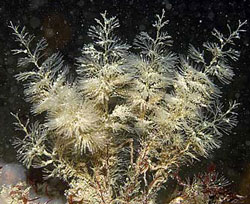Despite the fact that sea cypress isn’t actually a plant, its use within the aquarium justifies its being included under this heading.
Sea cypress is, actually, the external skeleton of a hydroid polyp. It’s discovered naturally within the tidal waters of Holland, Germany, Iceland and Fantastic Britain and along the coasts of the North Sea. In this state it has a mossy, delicate appearance. It grows on the sea bed, occasionally in bunches or beds up to 10 in. in depth.
The skeleton is made of chitin-the exact same substance that forms the outer case of insects. The inhabitants are removed by a procedure of washing and drying, which leaves the skeleton clean and much more or less dehydrated. It’s in this form that it’s procurable for the use of tropical fish lovers. When dropped into an aquarium the ‘feathers’ spread out to make a life-like ornamental plant.
If a single ‘feather’ is viewed under a low power microscope, the small pockets that once housed the tiny polyp could be seen fairly clearly.
Sea cypress could be utilized within the aquarium merely to make a decorative piece, but its actual value lies in its use as a breeding ‘plant’.
When utilized as a breeding plant it’s not essential to cover the bottom of the aquarium with sand. The cypress could be anchored with a little piece of lead attached by squeezing to the base. The buoyant stems will then flow upwards, making an perfect egg catcher or refuge for livebearers.
An additional benefit of sea cypress is the reality that it could be stored when dry in a paper bag, and appears to last indefinitely if handled carefully. It’s just the factor to maintain handy when natural plants are challenging to obtain.
After utilizing for a specific spawning, sea cypress can either be washed gently under a running tap and returned to the aquarium, or thoroughly dried and stored.
It is also recognized as sea moss and white weed.

